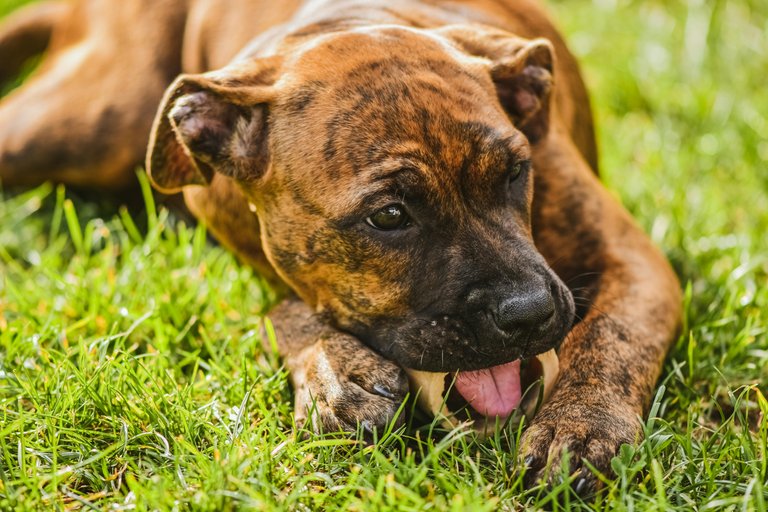Some of us as pet owners also like the idea of gardening, so we have some plants in our home as well. One thing we need to know however is that some of these plants are highly dangerous to our pets. So, if you want to have plants and pets in the same house, you need to be careful about them getting poisoned.
Depending on the species of the plant, the concentration of the poison, the amount consumed, and the size and health of the animal, the risk of plant poisoning could either be slight or high. The effect of these plant poisoning would include; vomiting, diarrhoea, and nausea. In the case of a more serious case, there could be an effect of respiratory distress, and heart arrhythmia, a more fatal case like death could be provided upon the consumption of a more poisonous plant.
rawpixel.com
These are plants that could pose a severe danger to your lovely pet;
Most homes have aloe vera as it is a great indoor plant, but it is considered poisonous to plants. The active substance in aloe vera, some of which have a strong laxative effect, mainly attacks the lining of the kidney, uterus, and stomach.
You may begin to notice symptoms of poisoning in your pet only after they have consumed a large quantity. Bloody diarrhea, increased urination, blood in the urine, possible miscarriage, lethargy, and vomiting are visible effects that may arise.
Angel's trumpet contains toxic ingredients that include atropine, scopolamine, and L-hyoscyamine. This plant happens to be one of the most dangerous ones and every part of it is poisonous. Its active substance targets the eyes, central nervous system, glands, heart, smooth muscle of the gastrointestinal tract, ureters, and bile ducts.
It provides consequences such as; movement disorders, vomiting, drowsiness, diarrhea, difficulty swallowing, visual disturbances, tremors, breath shortage, cramps, abdominal pain, intestinal problems, heart arrhythmia, respiratory paralysis, bloating, and visual disturbances.

pexels.com
Amaryllis are highly poisonous, they contain alkaloids that create symptoms of poisoning even when consumed in small amounts, it may result in abdominal pain, vomiting, colic, diarrhea, tremors, movement disorders, and even convulsions.
Azaleas is a type of rhododendron, it is a little deciduous plant species called azaleas, it is a large, woody shrub called rhododendrons. These plants contain a substance known as grayanotoxin that could result in cardiovascular collapse, every part of the plant is highly poisonous, and ingesting as little as 0.2% of the animal's body weight may cause poisoning.
Creating consequences like; appetite loss, disturbed heart rate, temporary blindness, coma, seizures, and in severe cases, death.
Anthurium is a plant called flamingo flower, its leaves are particularly poisonous to cats and dogs, and they contain oxalic acid and calcium oxalate crystals. The active substance it contains attacks the mucous membranes that line up the gastrointestinal tract, the throat, and mouth, amongst other things in the body.
Mouth irritation, bleeding of the gastrointestinal tract, digestive tract irritation, swelling of the upper respiratory tract, swallowing, diarrhea, vomiting, and bleeding in the gastrointestinal tract. In a case where a higher dose is consumed, it results in; convulsions, movement disorder, liver and kidney damage, and cardiac arrhythmia.
Castor beans with the botanical name, Ricinus communis, are highly toxic because they contain a highly lethal substance ricin, which prevents cells from producing proteins that are important to keep the body functional.
The associated symptom occurs around 12-48 hours after ingestion, and they include; appetite loss, excessive thirst, loss of coordination, weakness of the body, difficulty breathing, and other associated symptoms, upon an encounter with even a small amount, the problem could be fatal.
Daylilies with the botanical name, Hemerocallis spp, are highly dangerous to cats especially, they are considered highly toxic, and exposure to them could result in inappetence, kidney failure, and vomiting. Lilies are not usually toxic to dogs.
Philodendron, with the botanical name, Monstera deliciosa, has to do with pain, oral irritation, difficulty swelling, and swelling of the mouth as a result of ingestion.
Peonies are slightly poisonous, they have an active ingredient that targets the mucous membrane of the gastrointestinal tract, with consequences that involve diarrhea, and vomiting.
Conclusion.
As a pet owner, you need to be careful with the type of plants you keep in your garden, and make sure your pet does not eat up the plants you have in your garden. Keep both your pets and plants safe in their own space without them hurting one another.
References.
aspcapro.org/resource/17-plants
Hmmm, that's some nice collection of information as a pet owner...
Congratulations, you received an ecency upvote through the curator @ahmedhayat. Keep spreading love through ecency
Thank you for the upvote, greatly appreciated.
Thanks for your contribution to the STEMsocial community. Feel free to join us on discord to get to know the rest of us!
Please consider delegating to the @stemsocial account (85% of the curation rewards are returned).
Thanks for including @stemsocial as a beneficiary, which gives you stronger support.